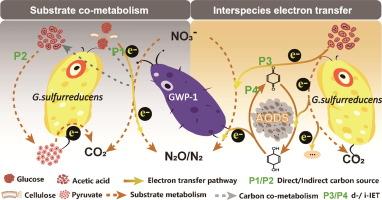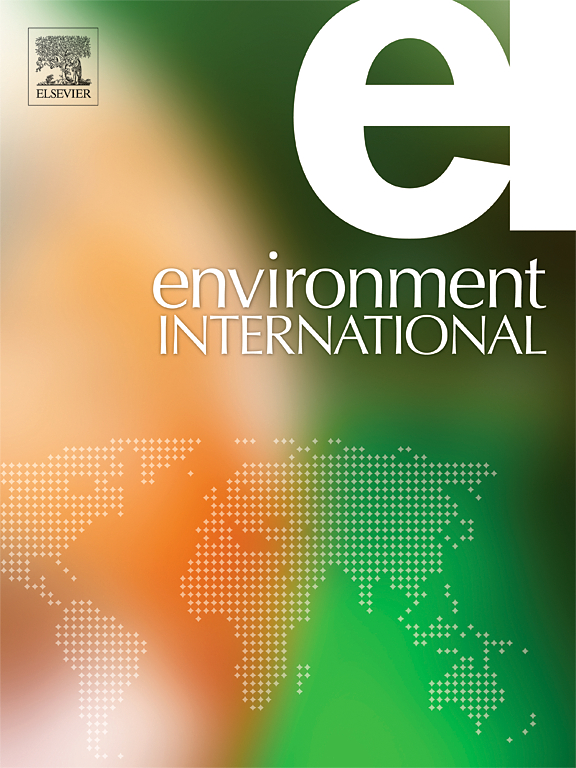Mutual symbiosis of electroactive bacteria and denitrifiers for improved refractory carbon utilization and nitrate reduction
IF 10.3
1区 环境科学与生态学
Q1 ENVIRONMENTAL SCIENCES
引用次数: 0
Abstract
Mutual symbiosis of electroactive bacteria (EAB) and denitrifier may be the key for solving the refractory carbon and residual nitrogen in wastewater treatment plant effluent. However, its application is hampered by unclear co-metabolic model and uncertain electron transfer. Here, we achieved 3–5 times increase in refractory carbon degradation, 40 % improvement in denitrification, and 36.0 % decrease in N2O emission by co-culturing P. aeruginosa strain GWP-1 and G. sulfurreducens. Such an enhancement is obtained by both refractory carbon co-metabolism and interspecies electron transfer (IET) between GWP-1 and G. sulfurreducens. Importantly, IET was quantified via isotopic approach, which revealed that G. sulfureducens supplies more electrons to GWP-1 when the system was fed with cellulose (0.071 mM) than glucose (0.012 mM). This study demonstrates that the residual refractory carbon and nitrogen in treated wastewater could be further converted by mutual symbiosis of EAB and denitrifiers, which paves a synergic way for pollution and carbon reduction.


求助全文
约1分钟内获得全文
求助全文
来源期刊

Environment International
环境科学-环境科学
CiteScore
21.90
自引率
3.40%
发文量
734
审稿时长
2.8 months
期刊介绍:
Environmental Health publishes manuscripts focusing on critical aspects of environmental and occupational medicine, including studies in toxicology and epidemiology, to illuminate the human health implications of exposure to environmental hazards. The journal adopts an open-access model and practices open peer review.
It caters to scientists and practitioners across all environmental science domains, directly or indirectly impacting human health and well-being. With a commitment to enhancing the prevention of environmentally-related health risks, Environmental Health serves as a public health journal for the community and scientists engaged in matters of public health significance concerning the environment.
 求助内容:
求助内容: 应助结果提醒方式:
应助结果提醒方式:


